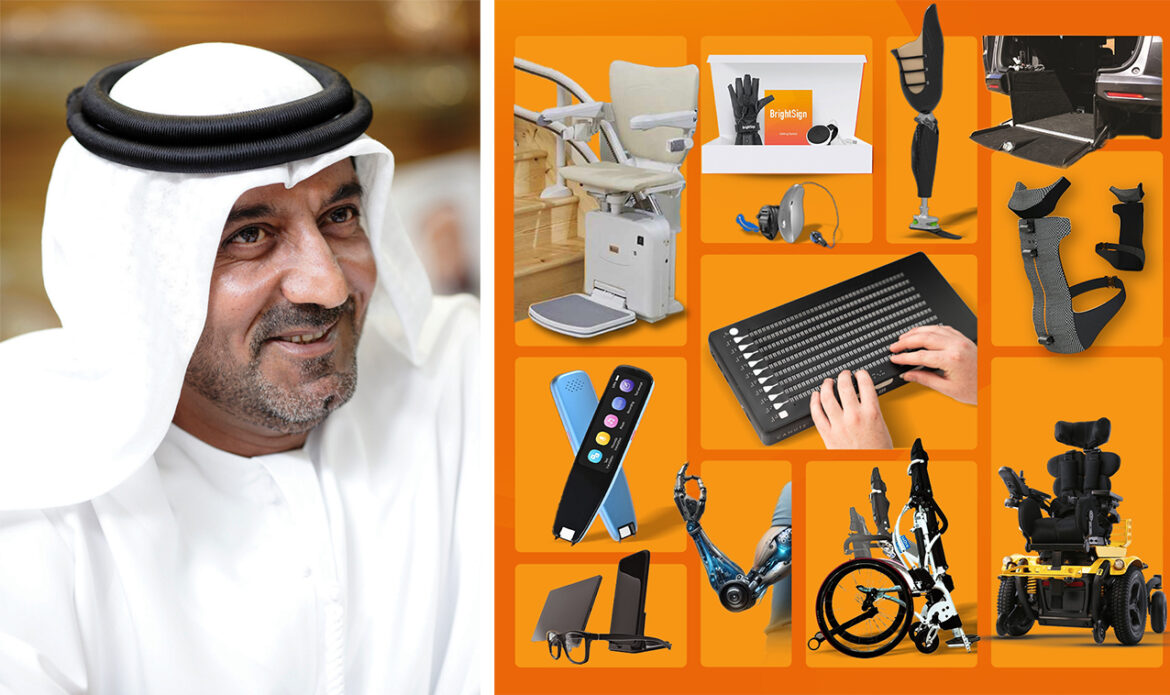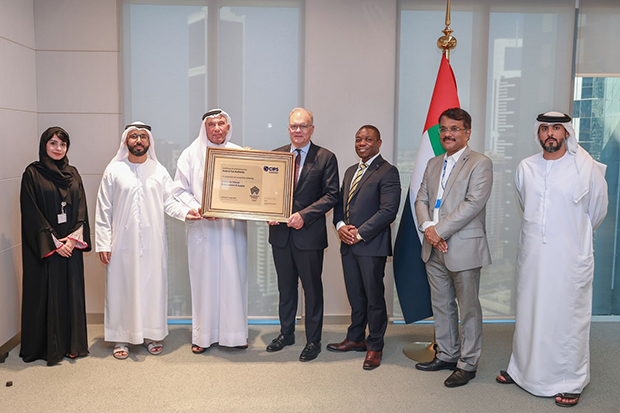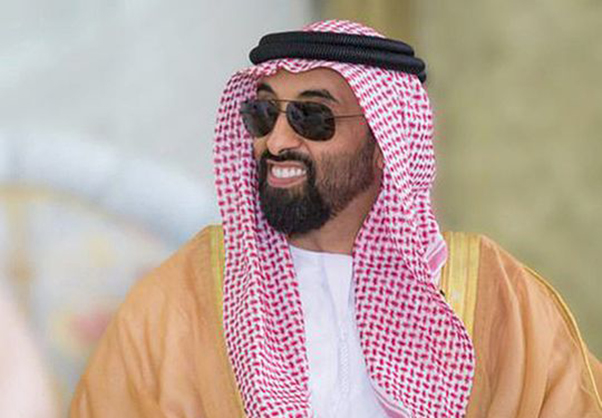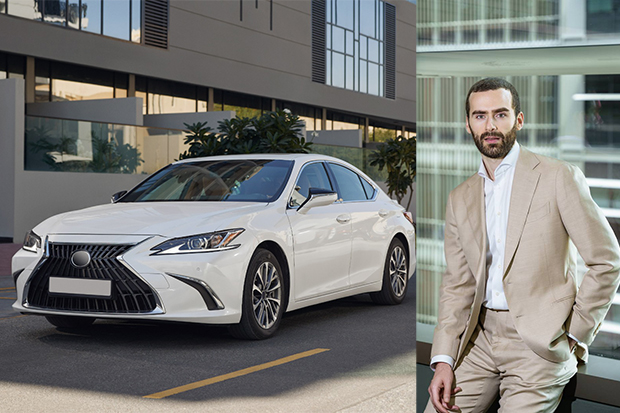6th AAE in Dubai in October designed for 50 million people with disabilities in the region
Sheikh Ahmed bin Saeed: The UAE is committed to empowering People of Determination and improving their quality of life
4,000+ assistive technologies to improve the lives of people with disabilities and the elderly
The most common functional disabilities in 77 countries surveyed for a UN report were ‘vision’ (20.9 percent), movement (12.1 percent), cognition (6.4 percent), hearing (4.8 percent) and self-care (4.1 percent)
The need to use glasses was the highest among the people with disabilities in all countries
Dubai, United Arab Emirates, June 3, 2024: Rapid advances in technology and innovations have been enabling approximately 1.3 billion People with Disabilities across the world to improve their quality of life and facilitate them to live more independently by benefiting from tremendous improvements in rehabilitation technology, telemedicine, and friendly infrastructure.
To keep the community updated about the tremendous transformation that advanced technologies have been bringing in the lives of People with Disabilities, the 6th edition of AccessAbilities Expo (AAE), the largest exhibition of its kind in the Middle East, will display the finest technologies under one roof to help more than 50 million People with Disabilities living in the Middle East region obtain the best technologies.
The AAE-2024 will be held from October 7 to 9 at the Dubai World Trade Center (DWTC) in Halls (6,7 and 8) with about 300 exhibitors, brands, and rehabilitation centers participating. More than 14,000 visitors from the community and decision-makers in the government and private sectors will attend, making it another successful edition.
His Highness Sheikh Ahmed bin Saeed Al Maktoum, Chairman of Dubai Civil Aviation Authority and Dubai Airports, Chairman and Chief Executive of Emirates Airline and Group, said: “Assistive technologies constitute an important factor in improving the quality of life of People of Determination and allowing them to live their lives more independently and conveniently. This Exhibition represents an opportunity to learn more about technological solutions, try them out, and benefit from them. It will be of great help to serve more than 50 million People of Determination residing in the Middle Eastern countries.”
The AAE Patron added: “The UAE is moving steadily and rapidly on the path to building an inclusive society that meets the needs and aspirations of People of Determination and making them active members of the society, in line with the vision of our wise government and the integrated efforts of the public and private sectors, and their efforts to share ideas and initiatives, and to enhance cooperation and coordination among them, at local and international levels, to build a sustainable future that meets their aspirations.”
Ghassan Suleiman, CEO of the AAE, said: “New technologies have completely changed the lifestyle of People with Disabilities, enabling them to live more independently or allowing them to participate in activities and situations that they were not able to do before. The Expo has been of great help to the community as it is bringing highly advanced technologies for the first time in the regional markets, to serve millions of People with Disabilities and contribute towards improving their quality of life.”
He added: “Motorized wheelchairs, eye-tracking systems, and 3D-printed prosthetics have become fairly common, along with text-to-speech software that has proven to be very useful for People with Disabilities. There are several types of technology under development including adaptive keyboards, AI-powered smart canes, smart glasses, robots, and personal emergency response systems, healthcare and rehabilitation technology. Technologies for People with disabilities have witnessed a tremendous revolution and continue to shape the future.”
According to the World Health Organization (WHO), more than 2.5 billion people around the world need one or more assistive products, and the number of people who will need assistive technology is expected to reach 3.5 billion by 2050. However, in many countries, most people who need these technologies cannot get them. Assistive products contribute to maintaining or improving individuals’ functions in terms of cognition, communication, hearing, movement, self-care, and vision, which enables their health and well-being, and their integration and participation in society. A joint report by the WHO and UNICEF in 2022 unveiled that about three percent of people in low-income countries have access to the assistive products they need, in comparison to 90 percent in most high-income countries.
About 80 million people need a wheelchair but only five to 35 percent have access to one, depending on the country in which they live. According to the WHO, more than 1.5 billion people – or one in five of the global population – suffer from hearing loss. That number will increase to almost 2.5 billion by 2050 with at least 700 million of these people experiencing disabling hearing loss (hearing loss greater than 35 decibels). About 16 percent of the population in highly developed countries required assistive devices (excluding spectacles). And out of all those who needed these devices, about 80 percent could access them. In countries with low development indexes, only 7.6 percent of the total population that needed these devices could have them. The most common functional disability reported among surveyed 77 countries was ‘seeing’ (20.9 percent) followed by mobility (12.1 percent), cognition (6.4 percent), hearing (4.8 percent), self-care (4.1 percent) and communication (2.4 percent). The need for spectacles was the highest among all countries, according to the UN health body.
The WHO and UNICEF have called for improving access to assistive technology within all development sectors and ensuring safe, effective, and affordable assistive products, involving users and families in the entire assistive technology access pathway, and raising public awareness and combating stigma regarding assistive technology. Measures are being taken to address the global disparity in access to assistive technology, developing normative guidance and providing technical support to its member states to support them in improving access to Assistive Technology.
According to current estimates, more than 4,000 assistive technologies have been designed for People with Disabilities and the elderly, ranging from wheelchairs to high-tech gadgets, and several companies have turned their research and development to assistive technologies. The global market of assistive technology for the disabled and elderly will reach US$50 billion by 2030, according to Next Move Strategy Consulting. According to UN ESCAP, about 350 million women and girls with disabilities live in Asia and the Pacific – more than half of the region’s total population with disabilities. According to the Asian Development Bank (ADB), the highest prevalence of children with disabilities (13.6 percent) is in South Asia, and the least prevalence (8.9 percent) is in Europe and Central Asia.










